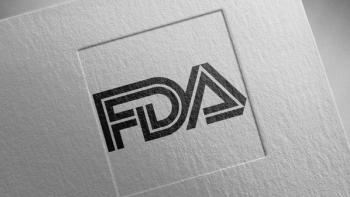
Diabetic Alert Dogs: What Do Their Noses Know?
A paw on the leg, a wet nose in the night-both have helped diabetes patients avoid the consequences of peaks and troughs in blood sugar. More on how the dogs do it, here.
Diabetic alert dogs (DADs) have become more mainstream over the past several years. Trained to alert to low, and sometimes high, blood sugar levels, DADs are usually placed with persons with type 1 diabetes. There are, however, potential DAD applications in the management of type 2 diabetes (T2DM). Consultantlive.com talked with Lily Grace, a registered nurse and founder of the National Institute for Diabetic Alert Dogs (NIDAD), a Nevada corporation that has trained more than 400 DADs over the past 11 years.
The Nose Knows
With more than 220 million scent receptors, a dog’s nose is more than 1000 times more sensitive than a human’s.1 DADs pick up on volatile organic compounds (VOCs), excreted in urine, sweat, saliva, and pulmonary vapors. Science has yet to explain exactly what compounds the dogs are able to smell, but likely candidates include ketosis products.
Changes in body chemistry can appear in body secretions 15 to 30 minutes before showing up in the blood. Oftentimes, values from continuous glucose meters (CGMs) or home blood glucose meters lag behind what a well-trained DAD can sense; a retest is required about 10 to 15 minutes after an alert from the dog. The pre-warning, according to Grace, helps improve glycemic control by putting patients on alert that there is a change happening-blood sugar trending up or down-so that they can take appropriate action; the improved control, she notes has helped achieve reductions in HbA1c as great as 1%.
“It doesn’t mean you don’t treat without testing,” Grace explained. “The dog is typically faster than a CGM, but CGMs give a number and the dog does not. It’s still a dog, and dogs will occasionally miss a low. So it’s always a combination of tools. It is absolutely critical that people know this.”
DADs can be particularly helpful at night, an especially dangerous time for those living alone with brittle diabetes and unawareness of hypoglycemia. When DADs smell changes in their companions’ blood sugar, they rouse them from sleep and potentially decrease the risk of seizures, brain damage, and death.
“The one thing that I want everybody to know is that DADs are not a replacement for any kind of treatment that physicians have prescribed,” warned Grace. “First and foremost I think that most people should be on an insulin pump. Second, they need to have a CGM. The dog comes third. I think the combination will help improve management and outcome down the road.”
Scientific Basis
Studies are few, but seem to confirm observations of owners and trainers:
o A survey of 212 owners of dogs kept as pets found that 65% of these dogs showed behavioral reactions to at least one hypoglycemia episode; 33.6% of owners believed their dog’s reactions occurred before they were personally aware of the episode.2
o Another survey of 36 DAD owners reported significant decreases in HbA1c (P < .001) and episodes of severe hypoglycemia (P < .039); 75% reported improved quality of life with their DAD.3
o A survey of 17 patients found that all participants reported decreased frequency of hypoglycemia, episodes of unconsciousness, or paramedic home visits; blood tests showed significantly improved glycemic control (P < .001).4
Since people tend to be more responsive to a dog pawing on them than human reminders, DAD alerts tend to be more positive experiences. In return, the dog gets a reward, what Grace calls a “puppy party”-treats, petting, and love.
“It’s better for everyone involved as opposed to a parent telling their child to go test because they’re having a behavior change,” Grace explained. “With a dog they’re more receptive and it results in better glycemic control.”
DADs and T2DM
DADs may be less helpful to those with T2DM who are receiving oral medication, said Grace. Since oral medications take longer to normalize blood sugar levels, patients experience extended periods of hyperglycemia. During that time, DADs can become “scent saturated,” similar to the habituation humans experience after spending time in a Starbucks.
If someone with T2DM is insulin-dependent, though, they may experience the same highs and lows as someone with T1DM. So the bigger issue is not whether someone has T1DM or T2DM, but whether they are insulin-dependent.
Training and Costs
Finding an appropriately trained DAD can be an issue. There are no national standards or governmental regulations for DADs. Grace has written standards for NIDAD and is working with other service dog organizations to pass regulatory legislation.
“Like any other industry in its infancy, it’s got a lot of problems. It’s a buyer beware market,” Grace warned. “It’s very dangerous if buyers are expecting the dog to be trained and it’s not, but there are people out there who are producing really great dogs.”
Here’s a snapshot of DAD training and costs:
o Adult DADs cost between $18,000 and $30,000, puppies often half that
o Usually not covered by insurance, although some nonprofits help defray costs
o Training takes 1.5 to 2 years, beginning on day 1 after birth with scent-imprinting using odor samples collected from clients during hypoglycemia episodes
o Training includes house training, leash training, work in public, scent work, and formal training about alerts and other DAD tasks such as retrieving glucose monitoring kits or cordless phones
DADs of the Future
If researchers can determine exactly what compounds DADs are picking up, this amazing canine ability could potentially benefit all people with diabetes. In July 2012, Eli Lilly and Company and the Indiana Canine Assistance Network partnered to identify the chemical compounds involved.1 One potential application is to develop a breathalyzer test similar to those used to assess blood alcohol levels.
“Don’t you think every single diabetic would buy that, if it was reliable, instead of having to prick their fingers?” Grace enthused.
It would surely be a great leap forward in improving quality of life for all persons living with diabetes. Although it may be farther on the horizon, for that we could truly say a dog is man’s best friend.
For more information:
o Can Do Canines:
o National Institute for Diabetic Alert Dogs:
o DAD Alliance:
o Dogs for Diabetics:
References:
- Lilly supports research to determine what a dog’s nose knows about people with diabetes and severe hypoglycemia [press release]. July 30, 2012.
https://investor.lilly.com/releasedetail.cfm?ReleaseID=696388 . Accessed April 9, 2014. - Wells DL, Lawson SW, Siriwardena AN. Canine responses to hypoglycemia in patients with type 1 diabetes. J Altern Complement Med. 2008;14:1235-1241.
http://www.ncbi.nlm.nih.gov/pubmed/?term=J+Altern+Complement+Med.+2008%3B14%3A1235-1241 . - Gonder-Frederick L, Rice P, Warren D, et al. Diabetic alert dogs: a preliminary survey of current users. Diabetes Care. 2013:e47.
http://www.ncbi.nlm.nih.gov/pmc/articles/PMC3609496/ . - Rooney NJ, Morant S, Guest C. Investigation into the value of trained glycaemia alert dogs to clients with type I diabetes. PLoS One. 2013;8:e69921.
http://www.ncbi.nlm.nih.gov/pmc/articles/PMC3737201/ .
Newsletter
Enhance your clinical practice with the Patient Care newsletter, offering the latest evidence-based guidelines, diagnostic insights, and treatment strategies for primary care physicians.

















































































































































































































































































